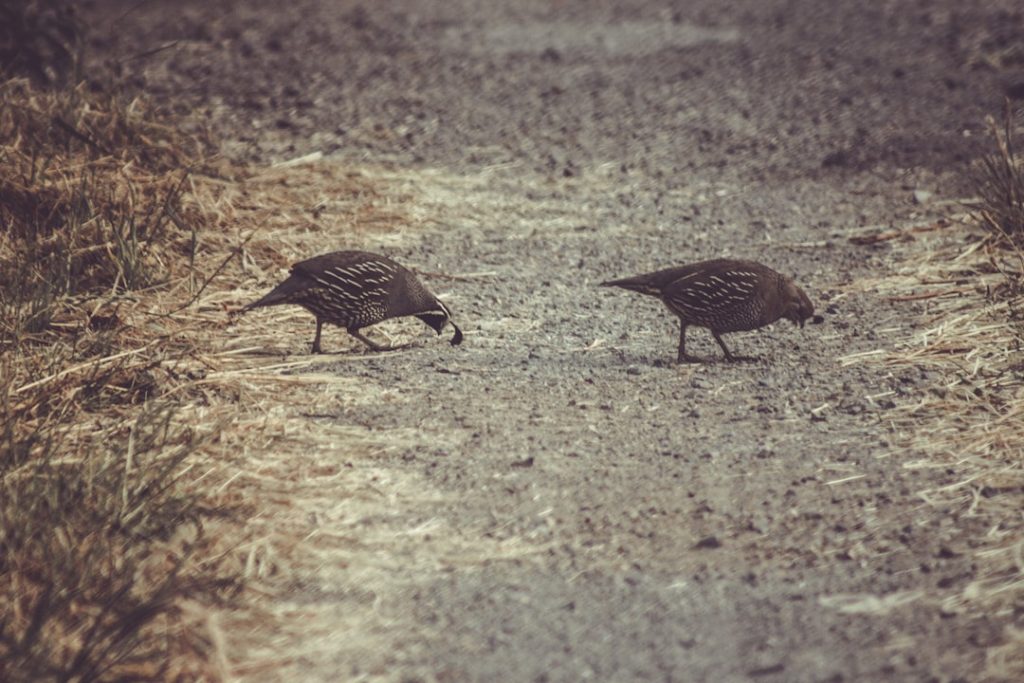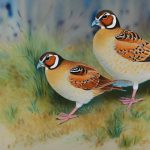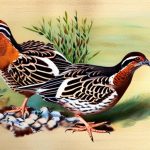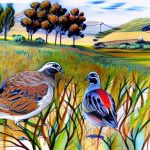New World quail breeds are a diverse group of birds that are native to the Americas. These quail are known for their small size, colorful plumage, and distinctive calls. They are popular among breeders and enthusiasts for their beauty, unique characteristics, and suitability for small-scale farming. New World quail breeds are also valued for their delicious meat and eggs, making them a popular choice for backyard poultry keepers and small-scale farmers. In this article, we will explore the history, characteristics, popular breeds, care requirements, health issues, and future trends of New World quail breeds.
Table of Contents
- 1 History and Origin of New World Quail Breeds
- 2 Characteristics and Physical Traits of New World Quail Breeds
- 3 Popular New World Quail Breeds for Breeding and Exhibition
- 4 Care and Housing Requirements for New World Quail Breeds
- 5 Health and Common Issues in New World Quail Breeds
- 6 Future Trends and Developments in New World Quail Breeds
- 7 FAQs
Key Takeaways
- New World quail breeds are a popular choice for breeders and exhibitors due to their unique characteristics and physical traits.
- The history and origin of New World quail breeds can be traced back to the Americas, where they have been bred for their meat and eggs for centuries.
- Popular New World quail breeds for breeding and exhibition include the Bobwhite quail, California quail, and Gambel’s quail, known for their distinctive markings and vibrant plumage.
- Care and housing requirements for New World quail breeds include providing a spacious and secure enclosure, a balanced diet, and regular health check-ups to ensure their well-being.
- Future trends and developments in New World quail breeds may focus on breeding for specific traits, such as color variations and disease resistance, to meet the demands of the modern poultry industry.
History and Origin of New World Quail Breeds
The history of New World quail breeds dates back thousands of years to the indigenous peoples of the Americas, who domesticated and bred these birds for food and cultural purposes. The ancient civilizations of the Americas, such as the Aztecs and the Mayans, revered quail as sacred animals and used them in religious ceremonies and rituals. These early civilizations also developed various breeding techniques to enhance the traits of these birds, leading to the creation of distinct quail breeds with unique characteristics.
European explorers and settlers later encountered these domesticated quail in the Americas and brought them back to Europe, where they were further bred and developed into the diverse range of New World quail breeds we know today. Over time, these birds have become popular not only for their cultural significance but also for their economic value as a source of meat and eggs. Today, New World quail breeds are found in various parts of the world, where they are bred for exhibition, farming, and conservation purposes.
Characteristics and Physical Traits of New World Quail Breeds
New World quail breeds are known for their small size, with most species measuring between 6 to 10 inches in length. They have plump bodies, short wings, and rounded tails, giving them a distinctive appearance. These birds come in a wide range of colors and patterns, with some species exhibiting striking plumage that makes them popular choices for exhibition and breeding.
In addition to their physical appearance, New World quail breeds are also known for their distinctive calls, which vary between species. Some quail have melodious calls that are pleasant to the ear, while others have more raucous or repetitive calls that serve as a form of communication within their flocks. These vocalizations add to the charm of keeping New World quail breeds and make them a delightful addition to any farm or backyard.
Popular New World Quail Breeds for Breeding and Exhibition
There are several popular New World quail breeds that are favored by breeders and enthusiasts for their unique characteristics and beauty. One of the most well-known breeds is the Bobwhite quail, which is native to North America and is prized for its delicious meat and distinctive call. The Bobwhite quail comes in several color variations, including white, brown, and speckled, making it a popular choice for exhibition and breeding purposes.
Another popular New World quail breed is the California quail, which is native to the western United States. This breed is known for its striking plumage, with a distinctive teardrop-shaped crest on its head and intricate black and white markings on its body. The California quail is a favorite among bird enthusiasts for its beauty and unique appearance.
Other popular New World quail breeds include the Gambel’s quail, Montezuma quail, and Mearn’s quail, each with its own distinct characteristics and appeal. These breeds are sought after for their beauty, unique calls, and suitability for small-scale farming and exhibition purposes.
Care and Housing Requirements for New World Quail Breeds
New World quail breeds have specific care and housing requirements that are essential for their health and well-being. These birds are relatively easy to care for but require proper housing, diet, and environmental conditions to thrive. When keeping New World quail breeds, it is important to provide them with a spacious enclosure that allows for ample room to move around and exhibit natural behaviors.
Quail housing should include a secure shelter to protect the birds from predators and the elements, as well as access to outdoor areas for foraging and exercise. The enclosure should also be equipped with appropriate bedding material, such as straw or wood shavings, to provide a comfortable and clean environment for the birds.
In terms of diet, New World quail breeds require a balanced diet that includes high-quality commercial feed supplemented with fresh fruits, vegetables, and protein sources such as mealworms or crickets. It is important to provide access to clean water at all times to ensure proper hydration.
Health and Common Issues in New World Quail Breeds
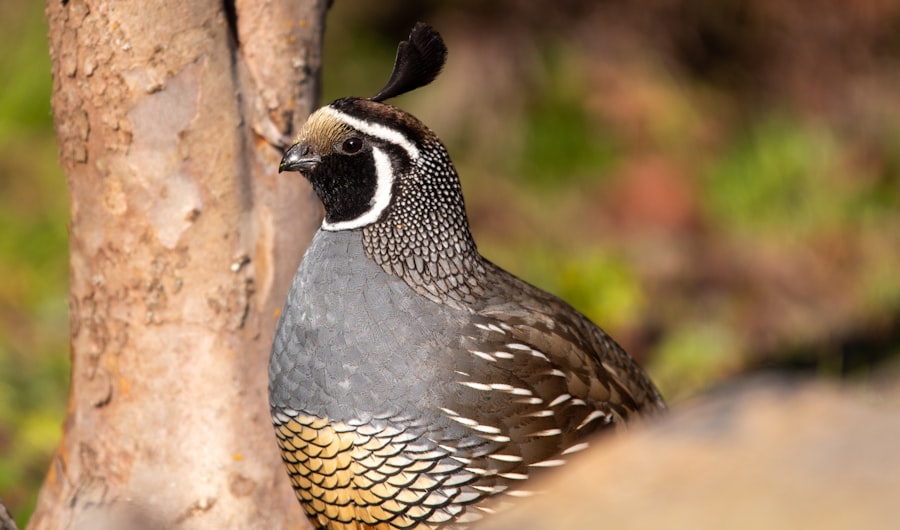
New World quail breeds are generally hardy birds but can be susceptible to certain health issues if not properly cared for. Common health problems in quail include respiratory infections, parasites, and injuries from predators or aggressive behavior within the flock. It is important to monitor the health of quail regularly and seek veterinary care if any signs of illness or injury are observed.
To prevent health issues in New World quail breeds, it is essential to provide a clean and sanitary living environment, regular access to fresh water, a balanced diet, and protection from predators. Additionally, practicing good biosecurity measures can help prevent the spread of diseases within a quail flock.
Future Trends and Developments in New World Quail Breeds
The future of New World quail breeds looks promising, with continued interest in these birds for exhibition, farming, and conservation purposes. As more people become interested in small-scale poultry keeping and sustainable farming practices, New World quail breeds are likely to gain popularity as an alternative source of meat and eggs.
In addition to traditional uses, there is also growing interest in conserving and preserving rare and endangered quail breeds through breeding programs and conservation efforts. This focus on conservation will help ensure the survival of these unique birds for future generations to enjoy.
Furthermore, advancements in breeding techniques and genetics may lead to the development of new color variations and traits in New World quail breeds, further expanding the diversity and appeal of these birds. With ongoing research and development in aviculture, we can expect to see new trends and developments that will continue to enhance the popularity and value of New World quail breeds in the years to come.
In conclusion, New World quail breeds are fascinating birds with a rich history, unique characteristics, and diverse appeal. Whether kept for exhibition, farming, or conservation purposes, these birds continue to captivate enthusiasts around the world with their beauty, distinctive calls, and valuable contributions as sources of meat and eggs. As interest in sustainable farming practices grows and conservation efforts expand, we can look forward to an exciting future for New World quail breeds with new developments and trends on the horizon.
If you’re interested in learning more about new world quail breeds, you may also want to check out this informative article on the benefits of an A-frame chicken coop on PoultryWizard. The article discusses how A-frame coops can provide a secure and comfortable environment for various poultry breeds, including quails. It’s a great resource for anyone looking to create a suitable habitat for their quail or other poultry. You can find the article here.
FAQs
What are the new world quail breeds?
The new world quail breeds refer to a group of quail species that are native to the Americas, including the northern bobwhite, California quail, Gambel’s quail, and Montezuma quail.
What are the characteristics of new world quail breeds?
New world quail breeds are known for their small size, rounded bodies, and distinctive plumage. They are ground-dwelling birds and are often found in grasslands, deserts, and scrublands.
What do new world quail breeds eat?
New world quail breeds are omnivorous and primarily feed on a diet of seeds, insects, and small invertebrates. They may also consume fruits and vegetation.
Are new world quail breeds kept as pets?
Yes, some new world quail breeds, such as the California quail, are kept as pets or for ornamental purposes. They are also popular game birds for hunting.
What is the conservation status of new world quail breeds?
The conservation status of new world quail breeds varies by species. Some, like the northern bobwhite, are considered to be of least concern, while others, such as the Montezuma quail, are classified as near threatened due to habitat loss and hunting pressure.
Meet Walter, the feathered-friend fanatic of Florida! Nestled in the sunshine state, Walter struts through life with his feathered companions, clucking his way to happiness. With a coop that’s fancier than a five-star hotel, he’s the Don Juan of the chicken world. When he’s not teaching his hens to do the cha-cha, you’ll find him in a heated debate with his prized rooster, Sir Clucks-a-Lot. Walter’s poultry passion is no yolk; he’s the sunny-side-up guy you never knew you needed in your flock of friends!

